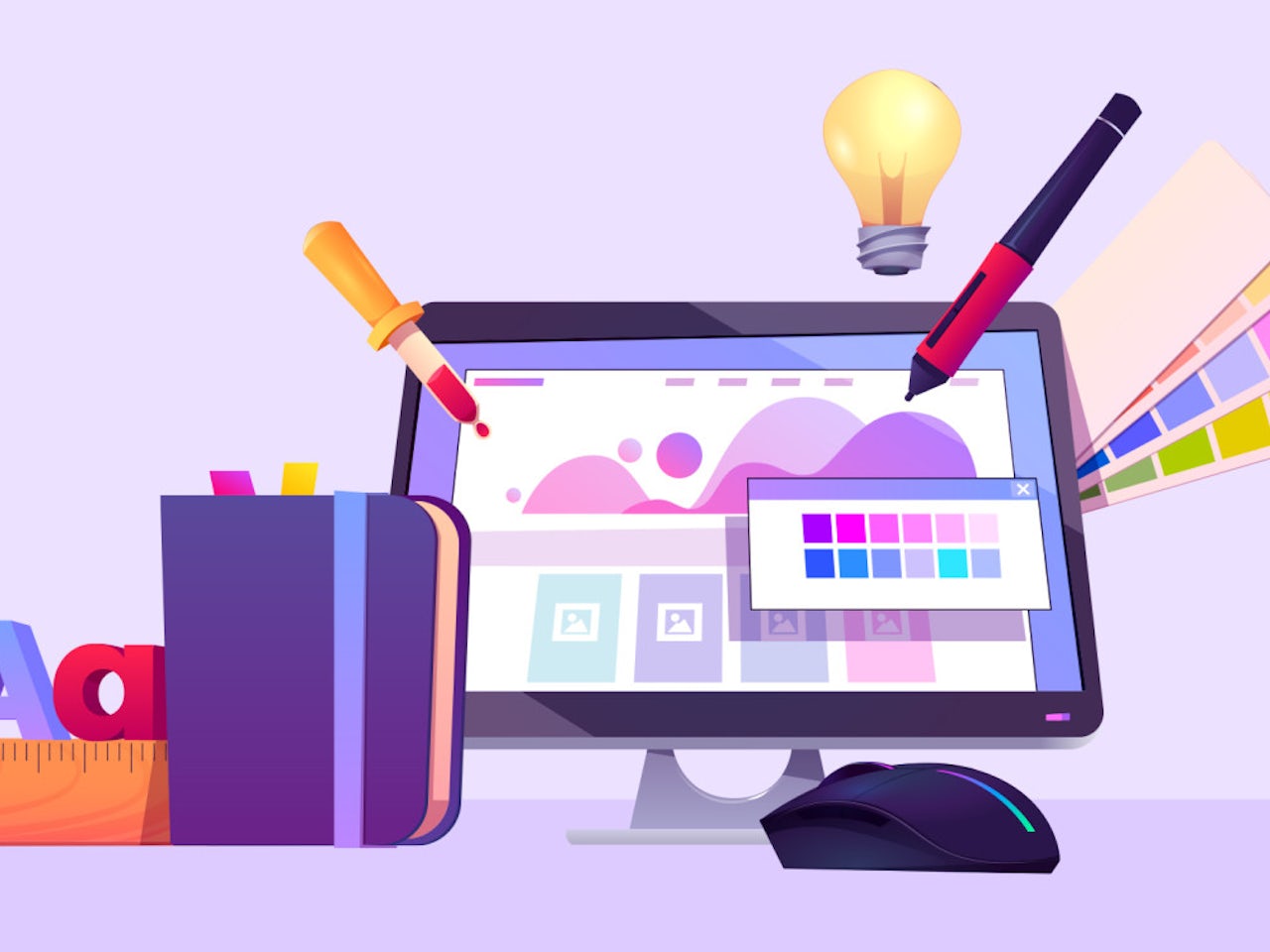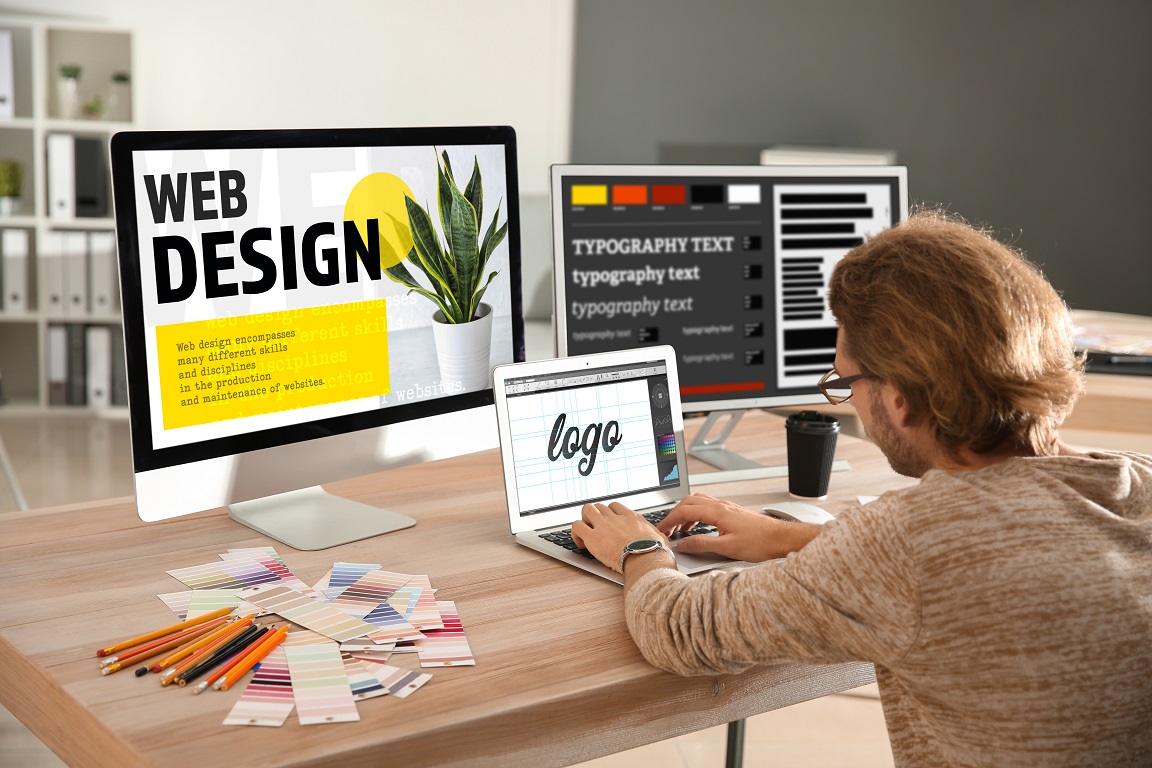Discovering Creative Fads in Web Design for Modern Businesses
The landscape of web design is consistently progressing, mirroring the vibrant needs of modern-day businesses. Current fads highlight a choice for minimalism, vibrant typography, and engaging interactivity. Business increasingly focus on user experience with mobile-first concepts and personalized material. Furthermore, a focus on sustainability is acquiring grip. Comprehending these trends is vital for organizations intending to stick out in a congested industry. What effects do these changes hold for the future of digital engagement?
Accepting Strong Typography
Vibrant typography has actually emerged as a defining element in contemporary web design, capturing focus and conveying messages with striking clearness. This trend focuses on visually impactful text that boosts user involvement and brand name identity. Developers usually make use of large typefaces and special typefaces to develop a hierarchy, assisting viewers via content flawlessly.
The calculated use vibrant typography permits efficient storytelling, allowing brands to interact their worths succinctly. It offers not just visual purposes however also practical ones, as it enhances readability throughout gadgets and screen sizes.
As sites contend for user interest, strong typography stands apart in a saturated digital landscape. Its convenience makes it possible for developers to experiment with contrasting designs and colors, further intensifying its effectiveness. Inevitably, welcoming bold typography stands for a shift in the direction of even more meaningful and communicative web design, fostering a much deeper connection in between brand names and their target markets.
The Increase of Minimalist Style
As digital environments become significantly messy, the rise of minimal design offers an invigorating option that prioritizes simplicity and functionality. This design philosophy remove unneeded elements, permitting web content to take center phase. By concentrating on clean lines, enough white room, and a minimal color combination, minimalist design enhances user experience and improves navigation.
Services embracing this fad aim to share their brand message plainly and successfully, promoting a feeling of calmness and clarity. The absence of interruptions aids users focus on essential details, resulting in boosted interaction and conversion rates. Furthermore, minimal layout lines up well with mobile-first strategies, ensuring that websites stay obtainable and straightforward across various gadgets.
Inevitably, the rise of minimalist layout reflects a more comprehensive change in the direction of focusing on user needs and preferences, making it a powerful device for contemporary services looking to make an enduring impact in the electronic landscape.
Immersive Animations and Interactivity
While several web designers accept minimal looks, one more engaging pattern gaining grip is the usage of immersive computer animations and interactivity. This strategy enhances user involvement by producing appealing experiences that attract visitors right into the material. Developers employ vibrant aspects such as computer animated histories, scrolling results, and interactive infographics to connect complex ideas in an easily accessible fashion.
These computer animations not just give visual interest but also overview individuals through the navigating procedure, making communications much more intuitive. Float impacts and computer animated shifts can encourage individuals to discover even more, leading to enhanced time invested on the site.
Moreover, this trend aligns with the wider movement in the direction of narration in web design, where computer animations act as narrative devices that communicate brand messages effectively. By integrating immersive computer animations and interactivity, organizations can distinguish themselves in a congested online landscape, eventually enhancing user satisfaction and brand name commitment.
Mobile-First Style Concepts
Mobile-first design concepts stress focusing on user experience by making sure internet sites function flawlessly on smaller sized displays. This method incorporates receptive layout strategies that adapt to various tool dimensions while preserving aesthetic honesty. In addition, it focuses on touchscreen navigation style, improving functionality for mobile individuals.
Prioritizing User Experience
How can developers properly prioritize user experience in a significantly mobile-centric globe? Stressing mobile-first style concepts is crucial, as users mainly engage with web sites via mobile tools. This approach encourages designers to enhance material, guaranteeing it is navigable and quickly obtainable on smaller sized displays. Secret techniques consist of streamlining navigation, reducing tons times, and utilizing touch-friendly aspects that boost interactivity. Additionally, focusing on clear typography and user-friendly layouts can substantially improve user fulfillment. Developers must constantly gather user feedback to fine-tune their approaches, adjusting to progressing user needs and preferences. By concentrating on these components, organizations can create an appealing electronic experience that cultivates loyalty and drives conversions, eventually straightening with the expectations these days's mobile individuals.
Receptive Layout Strategies
Designers welcome responsive design strategies to produce adaptive and versatile web experiences that accommodate different screen sizes. This technique focuses on mobile-first style principles, ensuring peak performance on smaller sized devices before scaling up for larger displays. By utilizing fluid grids, flexible images, and media questions, developers can keep a cohesive aesthetic identity throughout all systems. This method not just improves user involvement but likewise improves internet search engine positions, as mobile-friendly sites click here to read are preferred by search algorithms. In addition, responsive designs enable companies to get to a broader audience, fitting individuals on tablets, smart devices, and desktops alike. On the whole, implementing these strategies is important for modern web design, guaranteeing that companies continue to be competitive in an ever-evolving electronic landscape.
Touchscreen Navigation Design
With the rise of mobile tools, touchscreen navigating has actually become an essential aspect of web design. Developers are progressively adopting mobile-first principles to boost user experience and engagement. Web Design services. Efficient touchscreen navigation prioritizes larger switches and user-friendly gestures, allowing users to connect conveniently with web content. This method lowers disappointment and encourages exploration, as individuals can browse flawlessly with their fingers. Furthermore, incorporating swipe gestures and faucet performance satisfies the all-natural habits of mobile users. Responses mechanisms, such as aesthetic signs and animations, boost use even more by confirming actions. As touchscreens dominate user interactions, employing these style elements not only straightens with modern-day expectations but likewise fosters a more satisfying and easily accessible surfing experience for all users
Customized User Experiences
What makes an individual really feel genuinely involved on a web site? The response often exists in personalized user experiences. By customizing material and navigation to private choices, services can produce a significant connection with their audience. This personalization can be achieved via various techniques, such as evaluating user behavior, using cookies, and providing personalized suggestions based upon previous interactions.
As an example, ecommerce platforms that recommend moved here products based upon browsing background not just boost user experience but likewise enhance conversion prices. Integrating dynamic web content that adapts to the user's place or time of day can additionally enrich interaction.
In addition, tailored greetings or messages can make users really feel valued and recognized. As modern-day services seek to stand apart in a competitive electronic landscape, accepting customized user experiences ends up being necessary, cultivating commitment and motivating repeat check outs. Ultimately, this technique changes a basic internet site right into an interactive platform that reverberates with its target market.
Sustainability in Web Design
As the digital landscape proceeds to advance, the relevance of sustainability in web design has actually obtained substantial attention. Designers are increasingly knowledgeable about the ecological effect their developments can have, triggering a change towards eco-friendly techniques (web design company). Lasting web design focuses on enhancing internet sites to reduce energy consumption and carbon footprints. Approaches include utilizing minimalistic design concepts, enhancing photos, and employing efficient coding techniques to improve loading rates
The option of hosting suppliers plays a necessary role; lots of developers are currently opting for environment-friendly hosting services powered by eco-friendly power. By prioritizing ease of access and straightforward navigating, sustainable layouts also accommodate a more comprehensive target market, boosting usability. This conscious approach not only attract environmentally-minded customers however likewise adds to the overall longevity and performance of sites. Inevitably, sustainability in web design mirrors an expanding fad in the direction of responsible digital methods that straighten with contemporary organization values.

Often Asked Concerns
How Can I Select the Right Color Design for My Web site?
To select the ideal color design for a website, one should take into consideration the brand's identity, target audience, and psychological impact. Making use of shade concept and screening combinations can boost user experience and aesthetic charm significantly.
What Are the most effective Tools for Prototyping Web Styles?
The ideal devices for prototyping internet styles consist of Figma, Map out, Adobe XD, and InVision. These platforms supply intuitive user interfaces, collaboration functions, and substantial collections, making them optimal for developers to produce and improve their principles properly.
Exactly how Do I Gauge the Effectiveness of My Web Design?
To determine web design effectiveness, one need to assess user interaction metrics, conversion rates, and usability comments (Web Design Agency). A/B screening and heatmaps can likewise provide understandings right into user actions, leading essential modifications for enhanced performance and user experience
What Prevail Web Design Blunders to Stay Clear Of?
Typical web design blunders include chaotic layouts, bad visit homepage navigation, slow loading times, absence of mobile optimization, insufficient comparison, and ignoring user responses. Preventing these pitfalls boosts user experience and enhances overall efficiency of the internet site.
How Often Should I Update My Web Site Design?
A web site style need to be upgraded every two to 3 years, or earlier if significant adjustments in branding or modern technology occur. Regular updates keep the site fresh, practical, and straightened with present user assumptions.
